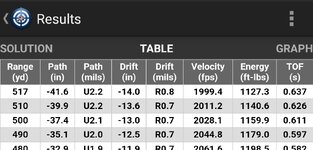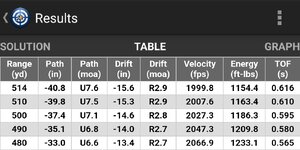The problem with energy is that it doesnt give the whole story.
What energy tells you is there is a combination of mass and velocity that together will upset the bullet. You have to have both for the bullet to do it's designed job, whatever that job is.
The other part to this whole "debate" is the principle of every action has an opposite [and equal] reaction is rarely mentioned. So if the "wallop" a bullet delivers on an animal is f(x) then there is a "wallop" of f(x)' the animal delivers back on the bullet.
That can't happen on velocity alone.
It does not give any indication as to what a particular bullet does in tissue.
Velocity doesn't either. That is merely the metric that is the most popular to equate damage because velocity is a variable we can see, aka, a crotch rocket exploding on impact going 150 mph.
A 30 cal 220 FMJ can impact a deer at a given range and velocity with a ton of “energy” but do little damage to tissue.
Now your bringing in the conservation of momentum, the thing that archery hunters are more concerned with because you want that arrow to push through.
A 90 grain eldx 6mm bullet could impact the same deer at the same distance with way less energy but damage internal tissue exponentially more. These are all just generalities but you get the point.
Does the 30 cal FMJ have a polymer tip like the EDLX does to initiate expansion? If not, it's not an apples to apples comparison.
Ask yourself what would happen with that 220 gr 30 cal if it had the same bullet design and ratio of velocity to mass as the 90 gr?
If that ratio for the velocity and the 90 gr were 25:1, what would it look like terminally for the 30 cal at 25:1? I bet it would be pretty devastating.
The problem, inherent, is that incomplete comparisons keep getting made between bullet's mass's and velocities with terminal performance.


